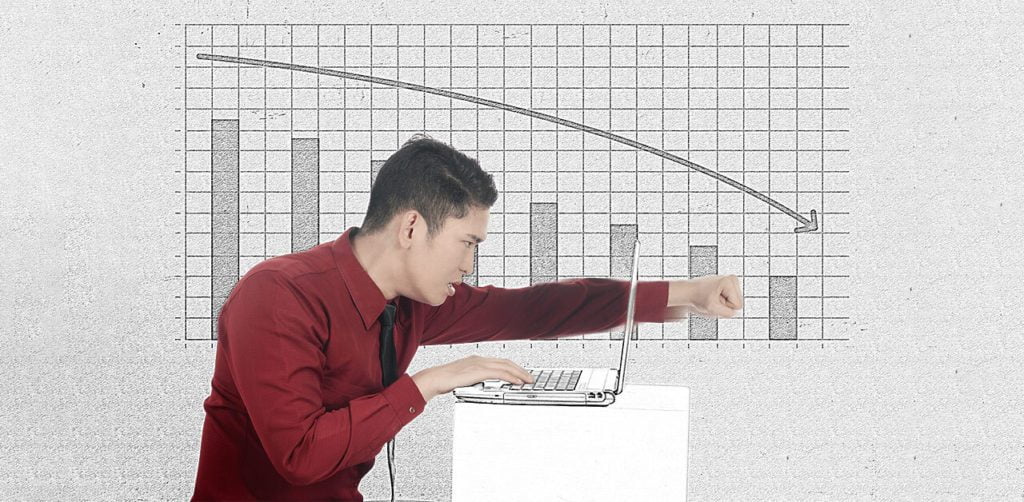Bounce Rate’s impact on Website Engagement and Sales
Almost every business today has an online presence. The tools of digital media allow them to gather data about their consumer’s behavior, demographics, sources etc. This data can be indirectly used to predict sales. A precursor to sales can also be found by calculating a correlation between the Website’s Engagement and sales.
Bounce rate
Bounce rate is a metric that measures the percentage of visitors who land on a website and then leave without taking any further action. These actions can include clicking on a link, navigating to another page, or submitting a form. In other words, they “bounce off” the website without engaging with it.
A high bounce rate means that visitors are not finding what they are looking for on the website, or that the website is not designed to encourage engagement. It could also mean that these visitors are not the right target audience for the website.
Leveraging Analytics for Better Website Engagement
In this fast-paced digital world, users are constantly bombarded with information from multiple sources. With human attention span becoming shorter than ever, grabbing customer attention is like trying to catch a fish in a raging river!
Forecast analytics
Forecast analytics can help decrease bounce rate by providing insights into visitor behavior and preferences. By analyzing historical data, forecast analytics can identify patterns in visitor behavior and understand what content or features are most likely to keep visitors engaged.
Here are a few ways it can help with catching and retaining users’ attention, thus decreasing the bounce rate.
Predictive Analysis
Predictive Analysis can help businesses anticipate user behavior by examining historical data such as user engagement patterns, trends, and seasonal patterns. This allows businesses to gain valuable insights into user interests and modify their digital strategies.
According to a study by Adobe, companies using predictive analytics were able to reduce their bounce rates by an average of 12%.
Google Analytics offers a variety of predictive analytics tools, including predictive analytics reports, cohort analysis, and machine learning models, which can help businesses bring down their bounce rates.
Personalization
Personalization helps businesses create tailored content for individual users. Using Forecast Analytics, businesses can analyze user data to identify patterns and trends to create personalized experiences.
According to a study by Accenture, 75% of consumers are more likely to buy from a retailer that recognizes them by name, recommends options based on their purchase history, or knows their purchase history.
Adobe Target is a tool that integrates with Adobe Analytics to personalize websites based on visitor behavior and preferences, reducing bounce rate through audience targeting, automated personalization, and A/B testing.
Real-Time Monitoring
Real-time monitoring helps businesses adjust their digital strategies by tracking user engagement in real-time. Forecast Analytics allows businesses to analyze user data in real-time, identify trends, and adjust their strategies to better engage users.
According to a study by Evergage, businesses that use real-time personalization see a 19% increase in sales.
Google Analytics Real-Time is a free tool that provides information on active users, location, and pages they are viewing, identify issues causing a high bounce rate and take immediate action.
Testing and Optimization
Forecast Analytics can optimize digital strategies through A/B testing to compare and identify the most effective ways to engage and retain users.
According to a study by HubSpot, businesses that conduct A/B testing are 5 times more likely to improve their website conversion rates.
Google Optimize is a free tool that uses A/B testing and personalization to test different website page variations, integrated with Google Analytics, to increase customer engagement.
Staying Ahead of the Curve with Forecast Analytics
In the era of digital innovations, businesses and organizations must find innovative ways to stand out in a sea of information and capture users’ attention. By using forecast analytics, businesses can gain a deeper understanding of user behavior and preferences, allowing them to tailor their digital strategies accordingly. From predictive analysis to real-time monitoring, forecast analytics provides businesses with the tools they need to optimize their digital strategies and stay ahead of the curve. By implementing these strategies, businesses can not only catch users’ attention but also build lasting relationships with them, leading to increased engagement, loyalty, and ultimately, success.










